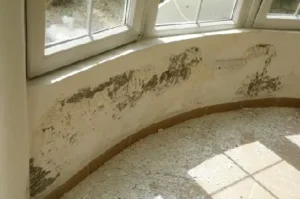Rising Damp Services
R ising Damp is moisture from the ground that migrates up a brick/masonry wall by a force known as ‘capillary action’. The moisture brings with it salts and minerals from the ground that can cause the deterioration of decorative surfaces and the break down of structural components in a masonry structure including renders and mortars.
ising Damp is moisture from the ground that migrates up a brick/masonry wall by a force known as ‘capillary action’. The moisture brings with it salts and minerals from the ground that can cause the deterioration of decorative surfaces and the break down of structural components in a masonry structure including renders and mortars.
Due to natural evaporation from the surface of walls, rising damp rarely occurs above a height of 1.5 metres unless forced higher by being sandwiched between 2 impervious layers of render, paint or wall paper. Temporary measures like cleaning the surface, re-plastering or repainting can actually make the situation worse.
If left untreated, this floor moisture may result in mould and mildew. Mould is a recognised allergen and irritant, which releases tiny spores that can travel in the air. These spores often have micro toxins and allergens attached to them and have been identified as a trigger for respiratory problems such as asthma, flu, and fatigue. Mould gradually digests and destroys whatever it grows on.
As this moisture is under the floor, the problem may remain unnoticed until it has caused serious health problems and has cost you a lot in repairs, etc. Preventing dampness under the home or fixing it early will keep you and your family healthy.
This is why rising damp treatment in Dundee is absolutely critical. Why let these problems ruin your life when with just one phone call to Global Preservation you can have one of their technicians call ‘round, professionally assess your home, and recommend relevant solutions to your problem.
Contact us today by calling 01382 787200 or use the online Form to Contact us for a Free Written Estimate.

